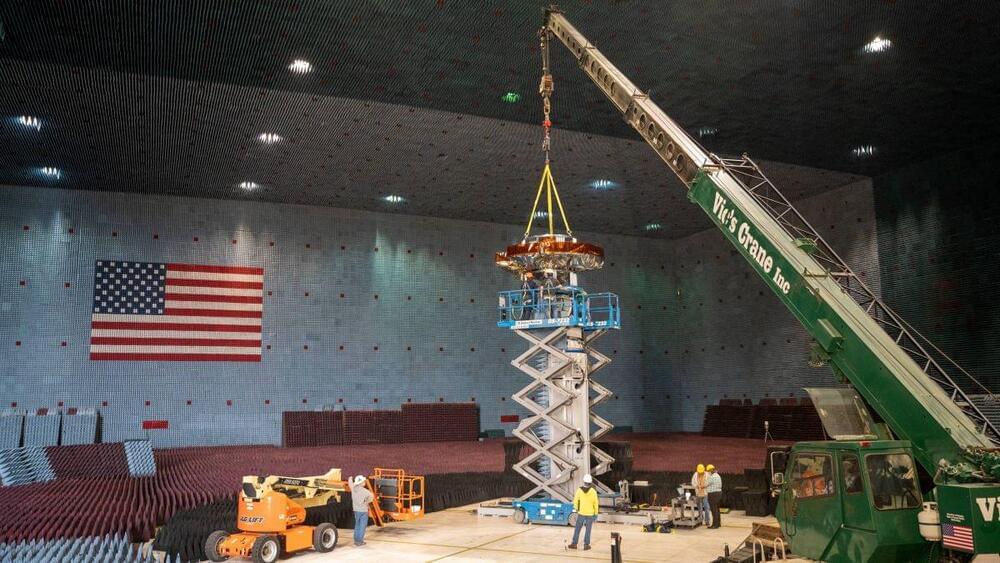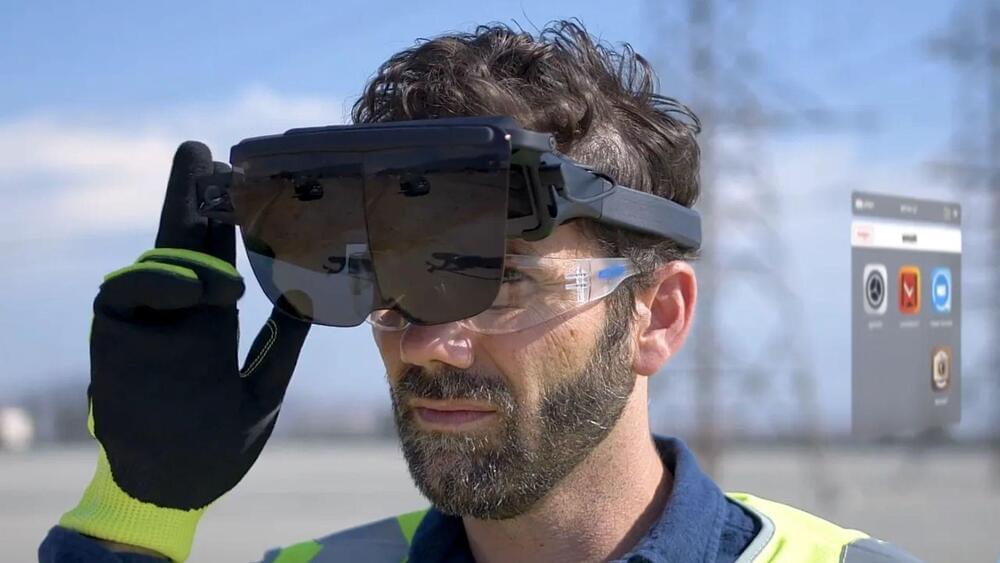Later this year, the Pentagon aims to launch Navigation Technology Satellite-3, which could help make the nation’s vital GPS architecture more robust.



Science Fiction author Robert J. Sawyer talks about Oppenheimer and about his Alternate History book: The Oppenheimer Alternative.
Where to find ‘The Oppenheimer Alternative” book?
Robert J. Sawyer’s website: https://sfwriter.com.
* Trinity moment — AI vs. Nuclear.
* ‘Now I am become death, the destroyer of worlds’
* The Jewish connection to the Manhattan project and the Nazi nuclear program.
* Nuking Japan.
* Oppenheimer personality.
* Nuclear as a Double Edge Sword. Existential risk of a nuclear Holocaust.
* Thermonuclear — the rivalry with Edward Teller.
* Alternate History — the end of the world by 2030
* Military driven science vs. science driven by scientists.
* Nuclear energy in space.
* The Orion project — Nuclear Impales propulsion.
* Controversy of Wernher von Braun.
* Role of science fiction.
Channel inks:
Quora blog: https://spacefaringcivilization.quora.com/
Amazon Author page: http://amazon.com/author/ronfriedman.
My Website: https://ronsfriedman.wordpress.com/
How to support the channel:
Get $5 in NDAX (Canadian Crypto Exchange): https://refer.ndax.io/vm1j.
Buy Escape Velocity short stories collection:
Support with Ethereum or Plygon donation: sciandscifi.nft

A California-based startup called JetZero has a different idea: changing the shape of commercial planes and the material they’re made of. The company unveiled its designs for the midsize commercial and military tanker-transport markets this spring, and has big plans to upend the way air travel looks and feels—as well as how much it costs and how much carbon it emits. Tony Fadell, founder of venture capital firm Build Collective and a JetZero investor and strategic advisor, thinks the company could be the “SpaceX of aviation” due to its potential to disrupt the existing business model.
JetZero’s planes, which are still in the concept/prototype phase, have a blended wing body design. That means the wings merge with the main body of the aircraft, rather than being attached to a hollow tube like the planes we travel in today. Picture the body of a manta ray: wide and flat, it tapers off to a narrower fin at each side, with a head and a tail. A blended wing body aircraft isn’t terribly different, though on JetZero’s models the body isn’t quite as wide.
Besides providing a lot more space, this design is more aerodynamic than tube-and-wing planes. JetZero plans to fly its planes at higher altitudes than today’s norm (40 to 45,000 feet rather than 30 to 35,000), and says its airframe will cut fuel burn and emissions in half. It plans to make its planes out of carbon fiber and kevlar (a strong lightweight fiber used for things like body armor, bulletproof vests, car brakes, boats, and aircraft). The company says its planes’ lighter weight and improved aerodynamics would be able to fly at the same speed and range as existing midbody jetliners, but burn half as much fuel in the process.

Inspired by biological fractals, a team of researchers affiliated with multiple institutions in China has developed a new pore structure for a membrane used to separate uranium from seawater. In their paper published in the journal Nature Sustainability, the group describes their pore structure and how well it worked when tested. Alexander Wiechert and Sotira Yiacoumi with the Georgia Institute of Technology and Costas Tsouris with Oak Ridge National Laboratory, have published a News & Views piece on the work done by the team in China and the work that is left to do before the membrane can be commercialized.
In the 1950s, scientists realized that the world’s oceans held the potential for supplying the uranium needed to produce atomic weapons and electrical power. But it took another 30 years before a viable means of extracting uranium was developed. A team of researchers in Japan developed an amidoxime-grafted adsorbent that appeared able to do the job, but only in a limited way. In this new effort, the researchers have expanded on the work by the Japanese team to create a membrane for use in filtering uranium from seawater.
The membrane created by the team in China is based on a hierarchical pore structure that was modeled on fractals found in nature. Seawater containing uranium enters the outer portion of the membrane through macropores. The molecules in the water then migrate into a branching matrix of smaller channels. From there, they are carried to a microporous inner portion of the membrane where the uranium is absorbed by an amidoxime-grafted adsorbent. Testing showed it capable of extracting 9 mg g−1 from a sample of seawater over four weeks.

Basically I have talked about how chaos gpt poses a great threat to current cyberdefenses and it still does but there is great promise of a god like AI that can a powerful force of good. This could also become a greater AI arms race that would need even more security measures like an AI god that can counter state level or country level threats. I do think this threat would come regardless when we try to reach agi but chat gpt also shows much more promising results as it could be used a god like AI with coders using it aswell as AI coders.
Chaos-GPT, an autonomous implementation of ChatGPT, has been unveiled, and its objectives are as terrifying as they are well-structured.

The U.S. Navy has awarded Mira a $700,000 contract, while another agreement is set in stone with the U.S. Air Force.
Right on the heels of unveiling its Vision Pro mixed reality headset, Apple has now confirmed that it has acquired Mira, a Los Angeles-based maker of light hardware for augmented reality, The Verge.
The Worldwide Developers Conference had unveiled Apple’s plans for its future as it revealed a string of devices powered by ‘homegrown’ chips and the much-awaited foray into the mixed reality space.
Israel’s military technology manufacturer, Camero Tech, has unveiled its latest and most advanced detection system. Called XAVER 1,000, this system enables soldiers to gain a tactical advantage by detecting objects and individuals behind solid walls before initiating an attack. The XAVER 1,000 was showcased at the Eurosatory 2022 exhibition in Paris, where it was met with significant interest and positive feedback.
In this video, we are taking a closer look at the XAVER 1000.
➢ Subscribe: @defencecentral.
➢ Check out our latest video where we compare the two best air defence systems in the world: https://youtu.be/YdWFU-SSEw8
FAIR-USE COPYRIGHT DISCLAIMER
Copyright Disclaimer under Section 107 of the Copyright Act 1976, allowance is made for “fair use” for purposes such as criticism, commenting, news reporting, teaching, scholarship, and research. Fair use is a use permitted by copyright statute that might otherwise be infringing. Non-profit, educational or personal use tips the balance in favor of fair use.
Defence Central does not own the rights to these pictures. They have, in accordance with fair use, been repurposed with the intent of educating and inspiring others. However, if any content owners would like their images removed, please contact us by email at defencecentral1 [at] gmail.com.
See the shocking reasons why near-space balloons are a perfect platform for a cheap effective hard to detect, hard to defeat asymmetric warfare means to deliver a stunning devastating EMP attack on the US mainland.
Inspire your kids to love science!
SAVE 20% OFF New Science Kits Using Code: NEWKITSSAVE20 At Steve Spangler Science dot com! Great Educational Products For Kids! SHOP NOW! https://www.pntra.com/t/SENKTExNSUhDR05OSUxJQ0dPRkxGRw.
Save 1% on GoldBacks from Green Greg’s affiliate link (Use coupon code GreenGregs):
For gardening in your Lunar or Mars habitat GalacticGregs has teamed up with True Leaf Market to bring you a great selection of seed for your planting. Check it out: http://www.pntrac.com/t/TUJGRklGSkJGTU1IS0hCRkpIRk1K
Awesome deals for long term food supplies for those long missions to deep space (or prepping in case your spaceship crashes: See the Special Deals at My Patriot Supply: www.PrepWithGreg.com.
For that off-grid asteroid homestead stock up with Lemans before you blast off:

In a new landmark study, University of Minnesota research shows surprising links between human cognition and personality—pillars of human individuality that shape who we are and how we interact with the world. Personality influences our actions, emotions and thoughts, defining whether we are extroverted, polite, persistent, curious or anxious.
On the other hand, cognitive ability is the umbrella that reflects our capability for navigating complexity, such as articulating language, grasping intricate mathematics and drawing logical conclusions. Despite the prevailing belief that certain connections exist—for instance, introverted individuals are often perceived as more intelligent—scientists lacked a comprehensive understanding of these intricate connections.
The research, published in the Proceedings of the National Academy of Sciences, synthesizes data from over 1,300 studies from the past century, representing more than 2 million participants from 50 countries and integrating data from academic journals, test manuals, military databases, previously unpublished datasets and even proprietary databases of private companies.